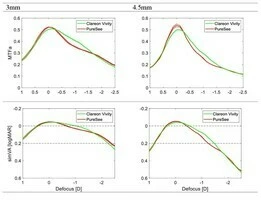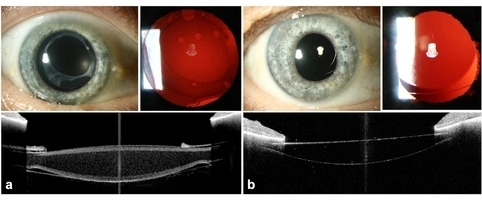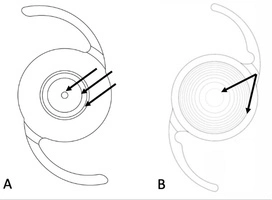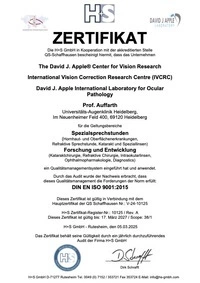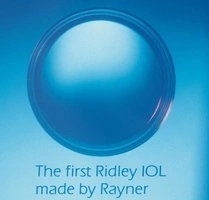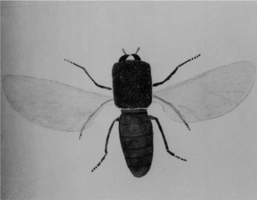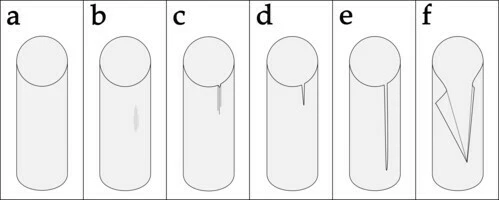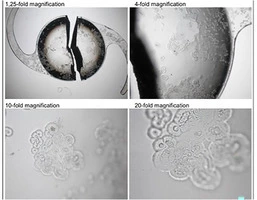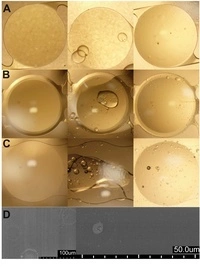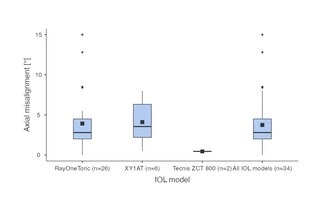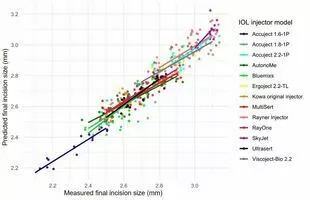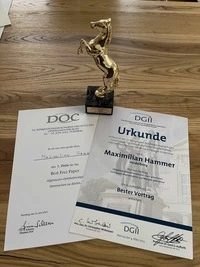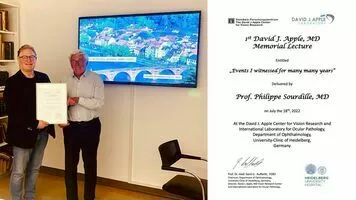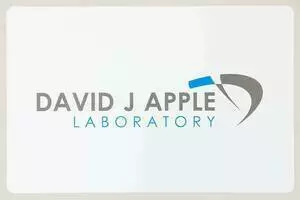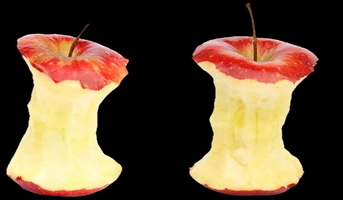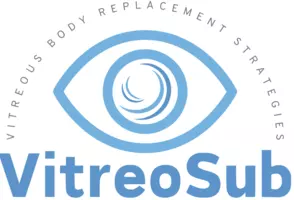Tags
featured
Artiplus and IPCL
Laboratory study of Ophtec's Artisan versus the Care Group's IPCL
In lab research, Oct 20, 2025Vivity and PureSee
EDoF lenses allow cataract and refractive-lens-exchange patients to have improved intermediate-distance vision. The lenses are made of different materials that have different chemical and physical properties. Their optical design is also different. We compared them in an optical quality analysis.
In lab research, Jul 24, 2025Safety in IOL exchange
We set out to study IOL exchange in patients who had IOL complications but otherwise had healthy eyes and we found visual and refractive outcomes were generally good. Changing the lens does not cause a significant change in aberrations. Intra- and postoperative complications were mostly mild and ...
In clinical research news, Jun 30, 2025Simulating IOL vision before implanting a lens
IOL simulators, where the patient can experience vision through IOLs prior to IOL implantation, are gaining interest among researchers and clinicians. We examined the correlation between one look-through simulator and the optical properties of modern IOLs, that we measured using an IOL metrology ...
In Laboratory news, Jun 25, 2025Exact and Symfony
We compared two hybrid refractive-diffractive IOLs with enhanced depth of focus.
In IOL Lab Research, May 20, 2025DGII 2025 prizewinning papers
Five prizewinning papers from Heidelberg at this year's DGII meeting.
In lab research, Feb 15, 2025An objective decision criterion for IOL exchange
Counselling after IOL calcification
In lab reserach, Feb 09, 2025How was the Ridley-Rayner IOL made?
Who were the Rayner men who designed and made the early IOLs?
In lab history, Nov 29, 2024Flies, Blinding Worms, Spitting snakes!
Ridley's 1944 radio broadcast about his field trip to Funsi, (RiverBlindness is eradicated in Ghana now) and Ridley's snake venom paper
In history, Nov 26, 2024A Novice in Tropical Ophthalmology
Harold Ridley's field work expedition in Ghana during World War Two
In lab history, Sep 20, 2024CAIRS
a 35-year old male presented to our keratoconus clinic complaining of bilateral reduced vision , despite spectacle correction due to significant astigmatism . his occupation as a welder with heavy exposure to a dusty environment made him an unsuitable candidate for contact lenses . the patient's ...
In clinical report, Jul 11, 2024Harold Ridley's birthday, 10 July
2024 marks the 75th anniversary of the first intraocular lens manufactured by Rayner in 1949. Sir Harold Ridley was born in Kibworth, a village in Leicestershire in the English Midlands, on 10th July 1906. He was the elder son of Nicholas Charles Ridley and Margaret (née Parker)
In lab history, Jul 10, 2024Predicting emulsification in Silicone Oil
Researchers studied straylight in explanted silicone oil samples to predict emulsification, finding increased straylight in samples from patients with visible oil droplets and specific indications, suggesting it as an early indicator for timely silicone oil removal.
In lab research, May 28, 2024A rare case of Calcification
A rare case of intraocular lens (IOL) calcification in a patient with Ehlers-Danlos syndrome was studied, highlighting the importance of considering patient host factors in IOL selection.
In lab research, May 27, 2024New IOL material - xPIB
Researchers have developed a novel intraocular lens (IOL) made of crosslinked polyisobutylene (xPIB), which showed promising results in terms of material quality and optical performance. The Eyedeal lens demonstrated lower glistening density and a higher contact angle compared to the AcrySof lens...
In Lab research, Mar 11, 2024Oil and Lenses don't mix
Researchers studied how silicone oil adhesion to intraocular lenses (IOLs) affects straylight, finding significant increases in straylight. The study also showed that the cleaning solution F4H5 can reverse straylight values, but surface changes remain.
In Lab news, Silicone oIl study, Nov 26, 2023The safety of Reversible Trifocality.
The paper "Rotational Stability of Toric Capsular Bag–Fixated Intraocular Lenses in Duet Procedure for Reversible Trifocality" evaluates the long-term rotational stability of toric intraocular lenses in polypseudophakic eyes. The study found that the presence of a second lens in the sulcus did no...
In clinical news, Oct 14, 2023DOG 2023 -Group Photo
The annual congress of the German Society of Ophthalmology (D.O.G.) took place on September 29, 2023, in Berlin, featuring a group photo of ophthalmologists from hospitals, medical centers, and research centers, including the David J Apple Center for Vision Research.
In lab news, Sep 29, 2023Comparing Multisert and AutonoMe.
Comparing Multisert and AutonoMe IOL injectors, a study found both allowed safe implantation, but Multisert showed more consistent behavior and less injector damage.
In lab, news, Sep 26, 2023APACRS LIM Lecture
Prof. Gerd U. Auffarth delivered the 2023 APACRS LIM Lecture, discussing current and future developments in intraocular implants with new materials at the 35th APACRS Annual Meeting in Singapore.
In lab news, Aug 12, 2023Overcoming implantation challenges with SING IMT
The SING IMT is a second-generation implantable miniature telescope designed to improve visual acuity and quality of life in patients with late-stage age-related macular degeneration (AMD). It features a smaller incision and improved surgical techniques compared to its predecessor. The device has...
In news, Aug 01, 2023Enlarged incisions – but why?
Researchers analyzed 409 incisions from 13 IOL injector models to identify factors affecting final incision size in cataract surgery, finding that injector tip diameter, preoperative incision size, insertion depth, and incision length significantly impact final incision size.
In lab news, Jun 29, 2023DOC23 Success
The David J Apple Laboratory celebrates success at the 35th International Congress of German Ophthalmic Surgery (DOC) in Nuremberg, where research fellows Leonie Britz and Max Hammer won "Best Paper of Session" Awards for their lectures.
In lab news, Jun 20, 2023Introducing Dynamic Stimulation Aberrometry
Researchers introduced dynamic stimulation aberrometry (DSA) to objectively measure binocular accommodation in 91 patients, finding that accommodative amplitude decreases with age and that DSA records pupil motility dynamically.
In lab, news, , Apr 29, 2023We're Recruiting!
The David J Apple Center for Vision Research is recruiting a student researcher to work on new projects involving material science applications for posterior segment ocular disease. The position involves laboratory bench research, rheological analyses, and Wet Lab surgery projects, with the possi...
In lab, news, Jan 23, 2023Merci beaucoup Philippe
Professor Philippe Sourdille delivered the 1st David J. Apple MD Memorial Lecture, "Events I Have Witnessed Over Many Years," at the University-Eye-Clinic in Heidelberg, Germany, sharing a fascinating journey through decades of ophthalmic research and technology.
In lab, news, Jul 18, 2022Jan Worst 1928 to 2015
Jan Worst, a pioneer in intraocular lens (IOL) design and co-founder of Ophtec, died on September 25, 2015, in Groningen, Netherlands. He developed the iris claw lens and phakic IOLs, and his company, Ophtec, became a leading manufacturer of IOLs.
In IOL history obituary, Sep 29, 2015The Legend of Albert Schweitzer
Albert Schweitzer (1875 – 1965) was multi-talented: a theologian, a doctor of medicine, a church organist, philosopher, pacifist and a philanthropist. Schweitzer received the 1952 Nobel Peace Prize in 1952 for his contribution to philosophy of "Reverence for Life."
In news lab history, Feb 21, 2013Why Heidelberg?
Heidelberg University is a public research university in Germany, founded in 1386. It is known for its strong research tradition, with 55 Nobel Prize winners affiliated with the university. The university has two main campuses, one in the Old Town and another in Neuenheimer Feld, which houses the...
In history, lab, Oct 24, 2012sticky
Two Apple cores
The core of the laboratory is the people who do the research. While David Apple was alive, he called his researchers the **Apple Korps**. Now one can talk of a New Generation of **Auffarth-Apple Korps**.
In lab news, history, Mar 01, 2023feature
Team VitreoSub is a winner!
The provided sources discuss various topics related to the vitreous body and retinal care. The vitreous body is a gel-like substance that fills the posterior chamber of the eye, maintaining the eyeball's shape. Vitreous Retina Macula Consultants of New York (VRMNY) is involved in clinical trials ...
In lab news, Dec 13, 2023Featured
-
Artiplus and IPCL
In lab research, -
Vivity and PureSee
In lab research, -
Safety in IOL exchange
In clinical research news, -
Simulating IOL vision before implanting a lens
In Laboratory news, -
Exact and Symfony
In IOL Lab Research, -
New Certificate
In lab news, -
DGII 2025 prizewinning papers
In lab research, -
An objective decision criterion for IOL exchange
In lab reserach, -
How was the Ridley-Rayner IOL made?
In lab history, -
Flies, Blinding Worms, Spitting snakes!
In history,


